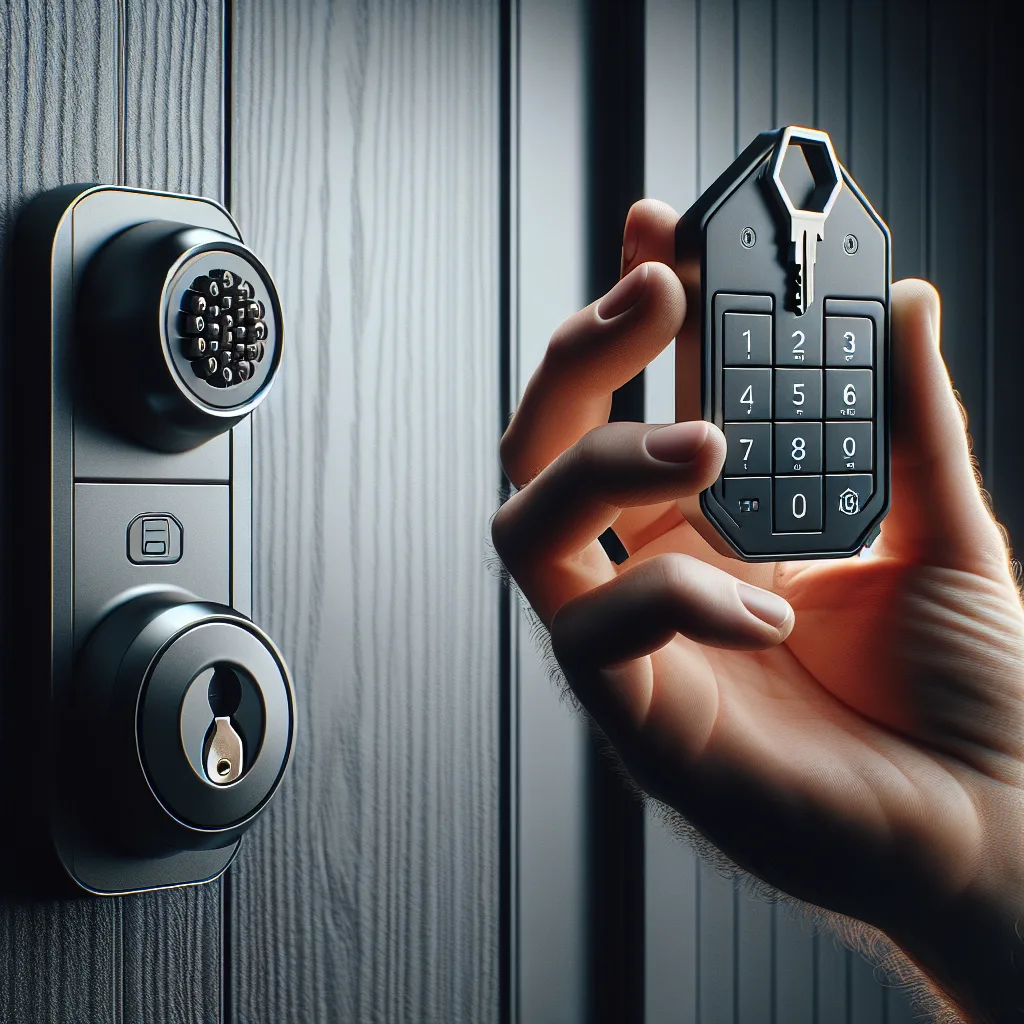It’s a classic home improvement dilemma.
You’ve decided to upgrade to a smart lock. You’re sold on the convenience—no more fumbling for keys, the ability to grant temporary access to a friend, and that little peace of mind knowing the door is locked from an app. You land on a popular choice, like the Yale Assure Lock 2. It looks great, it’s packed with features, and it’s from a brand you trust.
But then you look at the key in your hand.
It’s not just any key. It might be a high-security key, like an Abloy Protec2. It’s a key you invested in for a reason. It’s pick-resistant, drill-resistant, and the key itself is patented, meaning no one can just go to a hardware store and make a copy. It’s the peak of physical lock security.
And that’s when the big question hits you: Can I have both? Can I pair the smart convenience of my Yale Assure 2 with the serious security of my Abloy key?
It’s a fantastic question, and it gets right to the heart of a common worry: am I sacrificing security for convenience?
The Dream: Smart Tech Meets High Security
Let’s be clear, this idea is the perfect “have your cake and eat it too” scenario.
On one hand, you have the Yale Assure 2, a leader in the consumer smart lock space. It offers:
* Keypad or key-free entry
* Remote locking/unlocking via an app
* Activity logs so you know who’s coming and going
* Integration with smart home systems like Apple HomeKit, Alexa, and Google Home
On the other hand, you have a high-security lock cylinder. A cylinder is the part of the lock where the key goes in. Standard cylinders from brands like Yale or Schlage are great for everyday use, but high-security cylinders from companies like Abloy or Medeco are in a different league. They’re built to resist advanced picking, drilling, and bumping attacks. Their keys are also strictly controlled.
Combining them would be the ultimate setup: a digital front door with a nearly impenetrable physical backup.
So, Can It Be Done? The Straight Answer
I’ll get right to the point: No, you can’t easily use an Abloy Protec2 cylinder (or most other high-security cylinders) with a standard Yale Assure Lock 2.
It’s not a simple swap. These locks are designed as integrated systems. The internal mechanics of the Assure Lock 2 are built specifically for its own Yale cylinder. A high-security cylinder from another brand has different dimensions, a different shape, and a different way of interacting with the lock’s bolt mechanism.
Forcing them together isn’t like changing a tire. It would require a highly specialized (and expensive) locksmith to attempt custom modifications, which would absolutely void your Yale warranty. Even then, there’s no guarantee it would work reliably or securely. The internal mechanisms that make the smart lock “smart” could be compromised.
Okay, So What Are Your Real Options?
Just because the dream combo is off the table doesn’t mean you’re out of luck. You just have to decide what your top priority is.
Option 1: Go All-In on Key-Free
This might sound backward, but the most secure version of the Yale Assure Lock 2 is the one with no keyhole at all. The key-free model is just a sleek, discreet keypad.
Think about it: the biggest vulnerability of any lock is the keyhole itself. It’s a point of attack for picking or bumping. By removing it entirely, you eliminate that threat. Your entry methods are the keypad, your phone’s app, or your smart home system. It’s a different way of thinking about security, but it’s a very modern and effective one.
Option 2: Explore a Commercial-Grade Smart Lock
While consumer smart locks like the Assure 2 are built as all-in-one units, the world of commercial security is different. Some higher-end, commercial-grade smart locks are designed to work with what’s called an “interchangeable core” or IC.
This feature allows a facility manager to quickly swap out the lock cylinders without changing the entire lock. These locks are often compatible with high-security systems. However, be prepared for a significant jump in price and complexity. They’re built for businesses, not necessarily for the average home, and they might lack the user-friendly app or slick design of consumer models.
Option 3: The Two-Lock Solution
This is the most common compromise. Keep your trusted Abloy deadbolt as your primary lock—the one you use for overnight security and when you’re away on vacation.
Then, install a smart lock on your door’s handle (a lever or knob lock). You can use the smart lock for daily convenience—coming home with groceries, letting a dog walker in—while still having the high-security deadbolt as your main line of defense. It’s not as elegant, but it’s practical and doesn’t compromise on either front.
What’s the Right Call for You?
Ultimately, you can’t quite get the best of both worlds in one simple package. You have to choose what matters most.
If your primary goal is the convenience and modern features of a smart lock, then embracing a key-free model is likely your most secure and straightforward path.
If you absolutely cannot part with the physical security of your high-security key, then sticking with a robust mechanical deadbolt is still one of the most reliable ways to secure your home.
It’s less a question of which is “better” and more about which approach gives you the most peace of mind.
